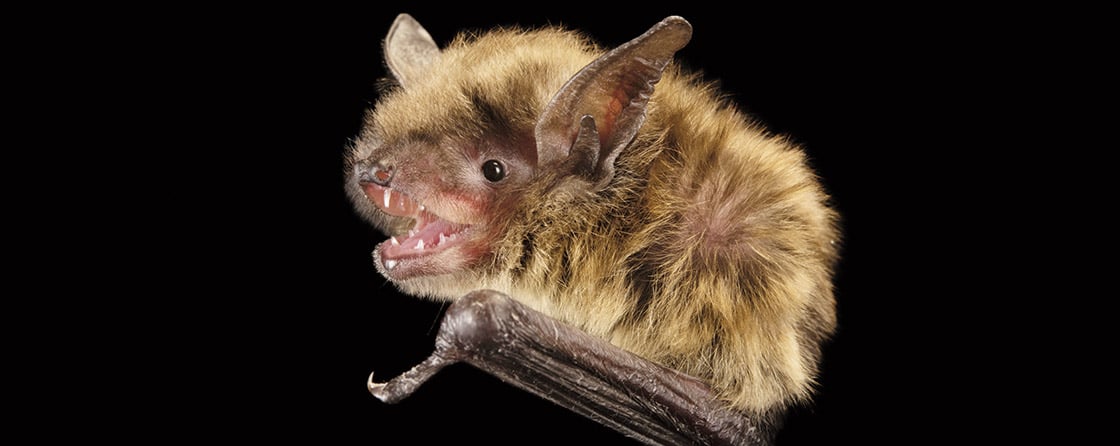Picture yourself as a little brown bat. You are tiny—half the size of an iPhone. Yet you are one of the most feared and misunderstood creatures on the planet. For thousands of years, humans have detested you, calling you a demon and a bloodsucker and a monster. But you are none of those things. What you are is extraordinary. You can fly as fast as a car. You can swallow 1,000 insects in less than an hour. Your highly sensitive ears are the envy of the animal kingdom. They enable you to hunt at night, a silent shadow swooping down from the sky with deadly accuracy. You can catch a moth with such pinpoint precision that you’ll swallow the body in mid-air, leaving nothing behind but the wings.
Right now, though, it is not moths that are in danger.
It is you.
It’s a cold winter day in an old abandoned mine in New Jersey. You and the hundreds of other bats in your colony are fast asleep, upside down and stuck to the walls like dark globs of glue. You’ve been here for weeks, hibernating just as you do every winter.
Suddenly, you are jolted awake.
You feel strange.
You are very, very thirsty.
And hungry.
So hungry!
You notice other bats waking up too. You also notice bats lying on the ground, not moving. They all have a mysterious white fuzz on their noses and wings—like a dusting of powdered sugar.
You don’t know what is happening. All you know is that you need food or you will die. You open your wings and fly out of your cave across the snow. But your belly is so painfully empty that flying is an agony.
You crash to the ground.
Picture yourself as a little brown bat. You are tiny—half the size of an iPhone. Yet you are one of the most feared and misunderstood creatures on Earth. For thousands of years, humans have detested you, calling you a demon and a bloodsucker and a monster. But you are none of those things. What you are is extraordinary. You can fly as fast as a car. You can swallow 1,000 insects in less than an hour. Your highly sensitive ears allow you to hunt at night, a silent shadow swooping down from the sky. You can catch a moth with such precision that you’ll swallow the body in mid-air, leaving nothing behind but the wings.
Right now, though, it is not moths that are in danger.
It is you.
It’s a cold winter day in an abandoned mine in New Jersey. You and the hundreds of other bats in your colony are sleeping, upside down and stuck to the walls like dark globs of glue. You’ve been here for weeks, hibernating just as you do every winter.
Suddenly, you are jolted awake.
You feel strange.
You are very, very thirsty.
And hungry.
So hungry!
Other bats are waking up too. And some are lying on the ground, not moving. They all have a strange white fuzz on their noses and wings—like a dusting of powdered sugar.
You don’t know what's happening. All you know is that you need food or you will die. You fly out of your cave. But your belly is so painfully empty that flying is an agony.
You crash to the ground.

